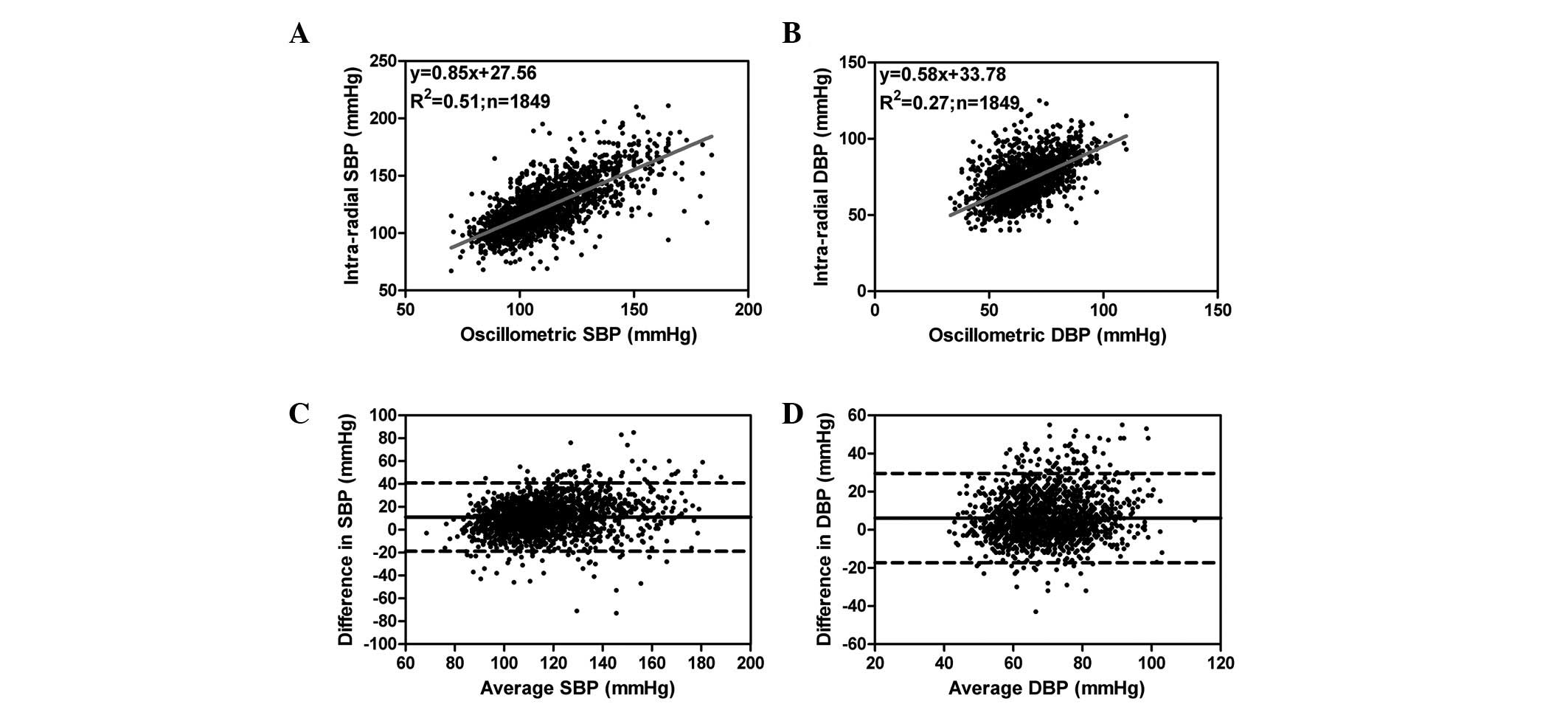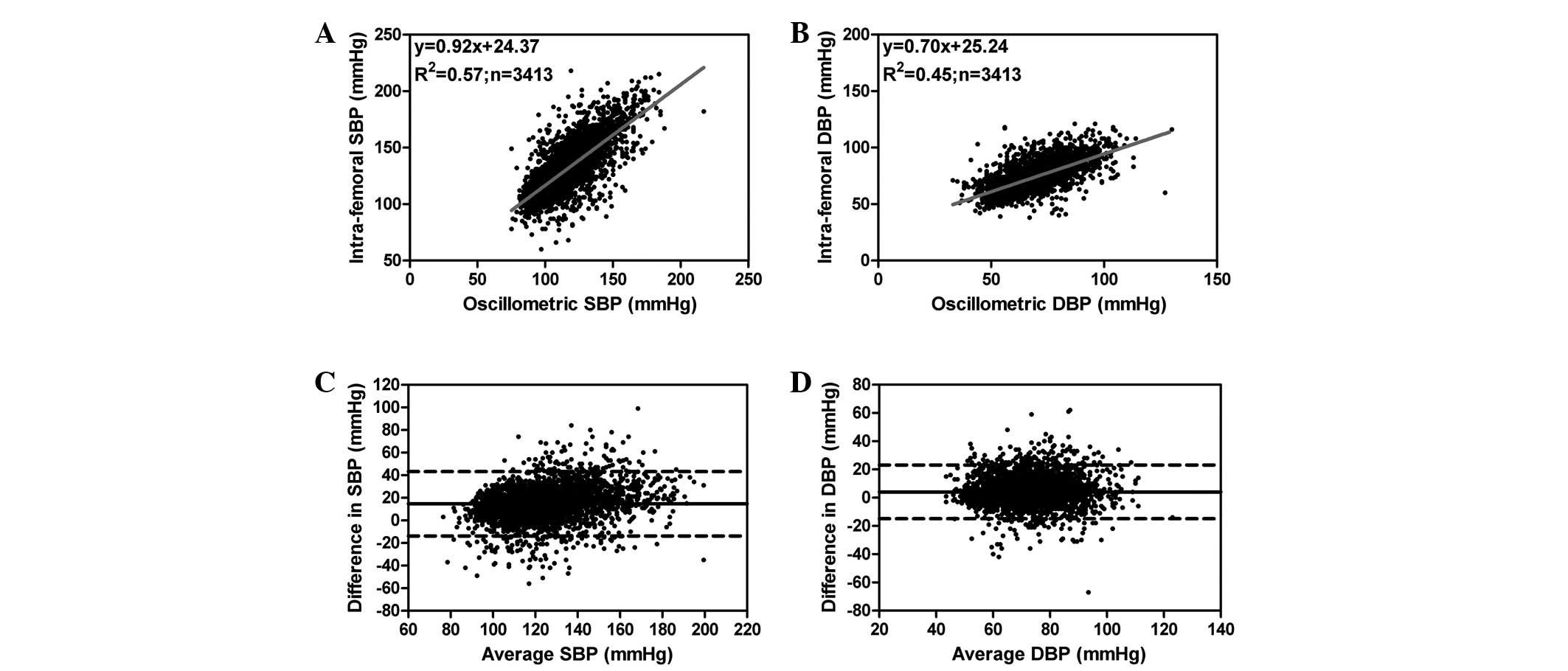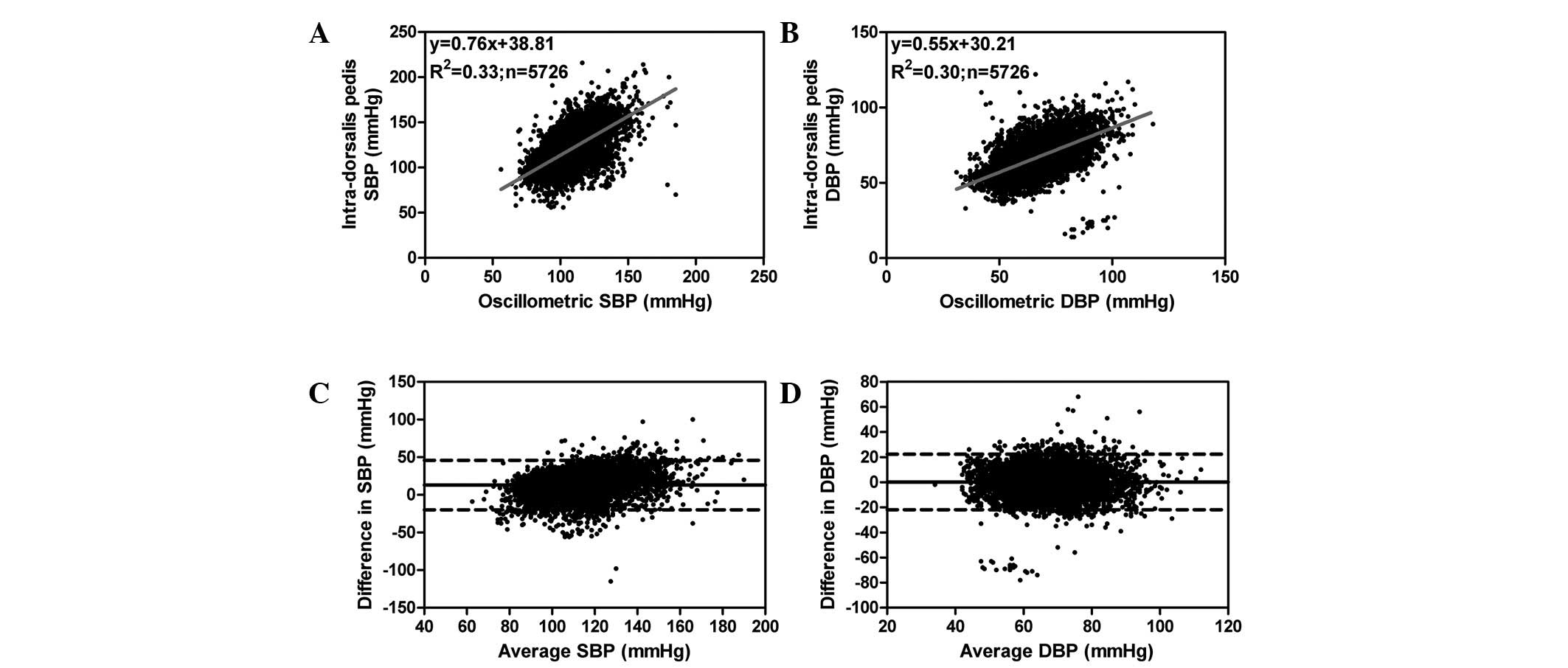|
1.
|
Bigatello LM and George E: Hemodynamic
monitoring. Minerva Anestesiol. 68:219–225. 2002.
|
|
2.
|
Bowdle TA: Complications of invasive
monitoring. Anesthesiol Clin North America. 20:571–588. 2002.
View Article : Google Scholar
|
|
3.
|
Scheer B, Perel A and Pfeiffer UJ:
Clinical review: complications and risk factors of peripheral
arterial catheters used for haemo-dynamic monitoring in anaesthesia
and intensive care medicine. Crit Care. 6:199–204. 2002. View Article : Google Scholar
|
|
4.
|
Frezza EE and Mezghebe H: Indications and
complications of arterial catheter use in surgical or medical
intensive care units: analysis of 4932 patients. Am Surg.
64:127–131. 1998.PubMed/NCBI
|
|
5.
|
Wilkins RG: Radial artery cannulation and
ischaemic damage: a review. Anaesthesia. 40:896–899. 1985.
View Article : Google Scholar : PubMed/NCBI
|
|
6.
|
Mireles SA, Jaffe RA, Drover DR and
Brock-Utne JG: A poor correlation exists between oscillometric and
radial arterial blood pressure as measured by the Philips MP90
monitor. J Clin Monit Comput. 23:169–174. 2009. View Article : Google Scholar : PubMed/NCBI
|
|
7.
|
Stover JF, Stocker R, Lenherr R, Neff TA,
Cottini SR, Zoller B and Béchir M: Noninvasive cardiac output and
blood pressure monitoring cannot replace an invasive monitoring
system in critically ill patients. BMC Anesthesiol. 9:62009.
View Article : Google Scholar : PubMed/NCBI
|
|
8.
|
Kermode JL, Davis NJ and Thompson WR:
Comparison of the Finapres blood pressure monitor with
intra-arterial manometry during induction of anaesthesia. Anaesth
Intensive Care. 17:470–475. 1989.PubMed/NCBI
|
|
9.
|
Gibbs NM, Larach DR and Derr JA: The
accuracy of Finapres noninvasive mean arterial pressure
measurements in anesthetized patients. Anesthesiology. 74:647–652.
1991. View Article : Google Scholar : PubMed/NCBI
|
|
10.
|
Janelle GM and Gravenstein N: An accuracy
evaluation of the T-Line Tensymeter (continuous noninvasive blood
pressure management device) versus conventional invasive radial
artery monitoring in surgical patients. Anesth Analg. 102:484–490.
2006. View Article : Google Scholar
|
|
11.
|
Kemmotsu O, Ueda M, Otsuka H, et al: Blood
pressure measurement by arterial tonometry in controlled
hypotension. Anesth Analg. 73:54–58. 1991. View Article : Google Scholar : PubMed/NCBI
|
|
12.
|
Belani K, Ozaki M, Hynson J, et al: A new
noninvasive method to measure blood pressure: results of a
multicenter trial. Anesthesiology. 91:686–692. 1999. View Article : Google Scholar : PubMed/NCBI
|
|
13.
|
Belani KG, Buckley JJ and Poliac MO:
Accuracy of radial artery blood pressure determination with the
Vasotrac. Can J Anaesth. 46:488–496. 1999. View Article : Google Scholar : PubMed/NCBI
|
|
14.
|
Cua CL, Thomas K, Zurakowski D and Laussen
PC: A comparison of the Vasotrac with invasive arterial blood
pressure monitoring in children after pediatric cardiac surgery.
Anesth Analg. 100:1289–1294. 2005. View Article : Google Scholar : PubMed/NCBI
|
|
15.
|
McCann ME, Hill D, Thomas KC, Zurakowski D
and Laussen PC: A comparison of radial artery blood pressure
determination between the Vasotrac device and invasive arterial
blood pressure monitoring in adolescents undergoing scoliosis
surgery. Anesth Analg. 101:978–985. 2005. View Article : Google Scholar
|
|
16.
|
Jagomägi K, Raamat R, Talts J, Ragun U and
Tähepõld P: Measurement of mean arterial pressure: comparison of
the Vasotrac monitor with the finger differential oscillometric
device. Physiol Res. 59:691–696. 2010.PubMed/NCBI
|
|
17.
|
Bruner JM, Krenis LJ, Kunsman JM and
Sherman AP: Comparison of direct and indirect methods of measuring
arterial blood pressure, part III. Med Instrum. 15:182–188.
1981.
|
|
18.
|
Lee JH, Kim JM, Ahn KR, et al: Study for
the discrepancy of arterial blood pressure in accordance with
method, age, body part of measurement during general anesthesia
using sevoflurane. Korean J Anesthesiol. 60:323–328. 2011.
View Article : Google Scholar : PubMed/NCBI
|
|
19.
|
Araghi A, Bander JJ and Guzman JA:
Arterial blood pressure monitoring in overweight critically ill
patients: invasive or noninvasive? Crit Care. 10:R642006.
View Article : Google Scholar : PubMed/NCBI
|
|
20.
|
Clark JA, Lieh-Lai MW, Sarnaik A and
Mattoo TK: Discrepancies between direct and indirect blood pressure
measurements using various recommendations for arm cuff selection.
Pediatrics. 110:920–923. 2002. View Article : Google Scholar
|
|
21.
|
Bur A, Herkner H, Vlcek M, et al: Factors
influencing the accuracy of oscillometric blood pressure
measurement in critically ill patients. Crit Care Med. 31:793–799.
2003. View Article : Google Scholar : PubMed/NCBI
|
|
22.
|
Bland JM and Altman DG: Statistical
methods for assessing agreement between two methods of clinical
measurement. Lancet. 1:307–310. 1986. View Article : Google Scholar
|
|
23.
|
Williams B, Poulter NR, Brown MJ, et al:
British Hypertension Society: Guidelines for management of
hypertension: report of the fourth working party of the British
Hypertension Society, 2004-BHS IV. J Hum Hypertens. 18:139–185.
2004. View Article : Google Scholar : PubMed/NCBI
|
|
24.
|
No authors listed. 1999 World Health
Organization-International Society of Hypertension Guidelines for
the Management of Hypertension. Guidelines Subcommittee. J
Hypertens. 17:151–183. 1999.
|
|
25.
|
Nichols WW and O’Rourke MF: General
principles for measuring arterial waves. McDonald’s Blood Flow in
Arteries: Theoretical, Experimental and Clinical Principles.
Nichols WW: Oxford University Press; New York: pp. 129–164.
1998
|
|
26.
|
American National Standard: Manual,
electronic or automated sphygmomanometers ANSI/AAMI sp 10-1992.
Association for the Advancement of Medical Instrumentation;
Arlington, VA: 1992
|
|
27.
|
Lakhal K, Macq C, Ehrmann S, Boulain T and
Capdevila X: Noninvasive monitoring of blood pressure in the
critically ill: reliability according to the cuff site (arm, thigh,
or ankle). Crit Care Med. 40:1207–1213. 2012. View Article : Google Scholar : PubMed/NCBI
|

















